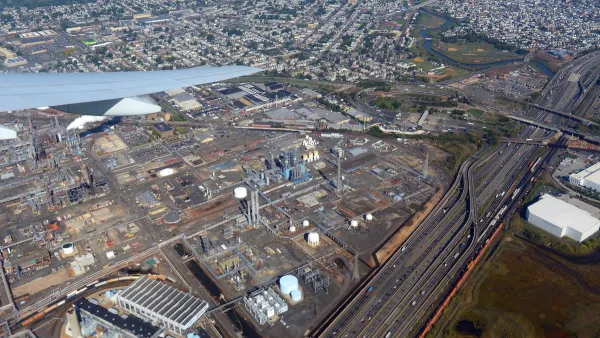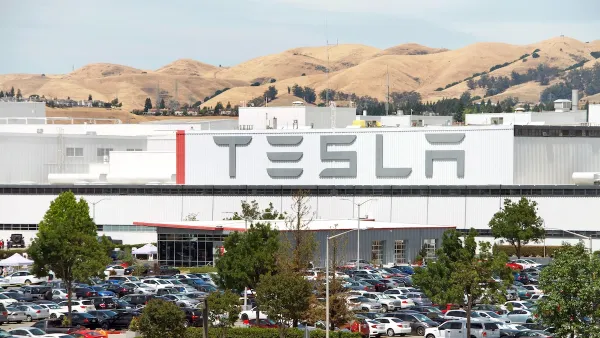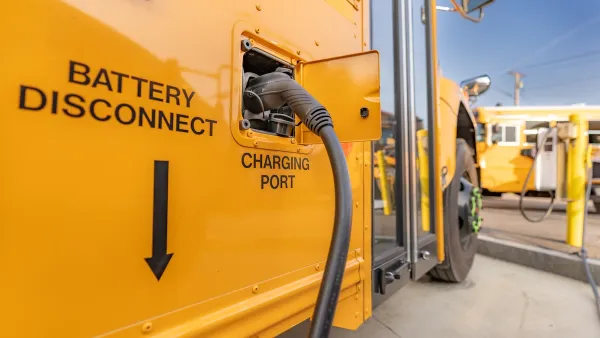While they emit less pollution, electric cars don’t solve many urgent issues like sprawl and fine particulate pollution.

A new analysis shows that even worldwide adoption of electric vehicles to replace gas-powered cars would not solve some major problems caused by auto-oriented infrastructure.
Writing in Bloomberg CityLab, Eric Roston explains that researchers surveyed roughly 400 papers to understand how the “substantial, ongoing investment” in physical and economic infrastructure that prioritizes cars harms public health and exacerbates climate change. “A comprehensive review published last month provides a litany of what the authors call ‘car harm,’ in estimated global totals of death, injury, disease and other miseries, over the course of automotive history.”
Meanwhile, electric cars don’t change underlying development patterns or how much space is allocated to cars. “Swapping engines for batteries isn’t changing how much cities pave themselves to accommodate cars, and or how cars kill people, the authors write. Although their tailpipes don’t spew carbon monoxide, they are often heavier than their internal-combustion counterparts, which means more fine-particle pollution from tires on highways.”
FULL STORY: EVs Can’t Fix a Global Epidemic of ‘Car Harm,’ Study Finds

National Parks Layoffs Will Cause Communities to Lose Billions
Thousands of essential park workers were laid off this week, just before the busy spring break season.

Retro-silient?: America’s First “Eco-burb,” The Woodlands Turns 50
A master-planned community north of Houston offers lessons on green infrastructure and resilient design, but falls short of its founder’s lofty affordability and walkability goals.

Delivering for America Plan Will Downgrade Mail Service in at Least 49.5 Percent of Zip Codes
Republican and Democrat lawmakers criticize the plan for its disproportionate negative impact on rural communities.

Test News Post 1
This is a summary

Test News Headline 46
Test for the image on the front page.

Balancing Bombs and Butterflies: How the National Guard Protects a Rare Species
The National Guard at Fort Indiantown Gap uses GIS technology and land management strategies to balance military training with conservation efforts, ensuring the survival of the rare eastern regal fritillary butterfly.
Urban Design for Planners 1: Software Tools
This six-course series explores essential urban design concepts using open source software and equips planners with the tools they need to participate fully in the urban design process.
Planning for Universal Design
Learn the tools for implementing Universal Design in planning regulations.
EMC Planning Group, Inc.
Planetizen
Planetizen
Mpact (formerly Rail~Volution)
Great Falls Development Authority, Inc.
HUDs Office of Policy Development and Research
NYU Wagner Graduate School of Public Service





























